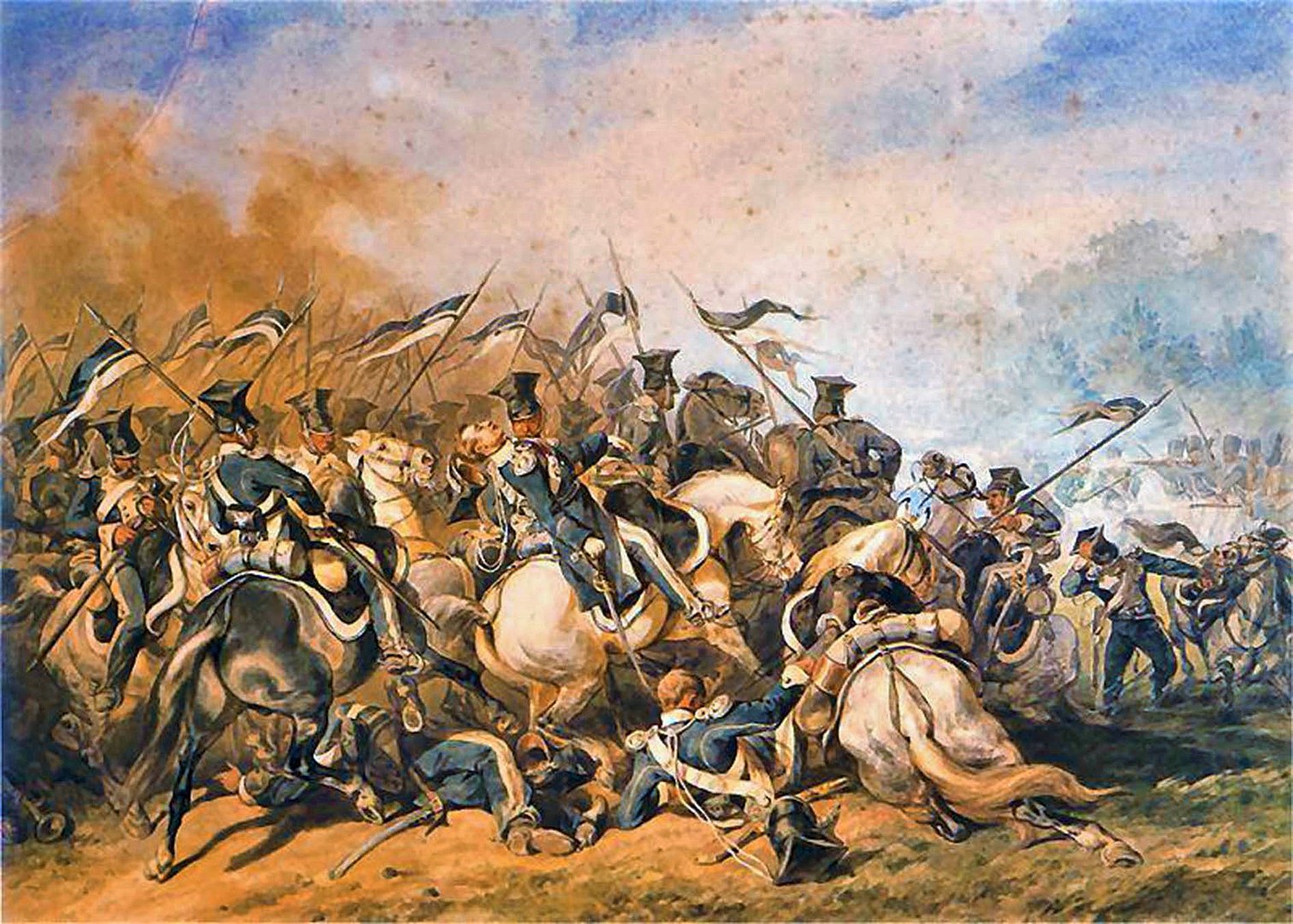Estimated reading time: 3 minutes
An armed rebellion of partitioned Poland against the Russian Empire began in Warsaw on the night of 29/30 November 1830.
On the night of 29-30 November 1830, the November Uprising broke out. The uprising, which lasted until October 1831, covered the territories under the Russian partition, i.e., the Kingdom of Poland and part of the lands directly incorporated into the Russian Empire.
In 1828, a conspiracy led by Second Lieutenant Piotr Wysocki was formed at the Warsaw officers’ school to prepare for the national uprising. The decision to launch the uprising was hastened by Russia’s planned military intervention against the revolutions in France and Belgium, in which the Polish army was to be incorporated, as well as by arrests among the conspiracy’s participants, which threatened to make it unconspiratorial.
On the evening of 29 November 1830, conspirators attacked the Belvedere, the seat of Grand Duke Konstantin Pavlovich, commander-in-chief of the Polish army and brother of Tsar Nicholas I. The building was captured, but the prince himself managed to escape.

Under pressure from public opinion, on 18 December 1830, the Sejm (Lower House of Polish Parliament) declared the uprising to be national. On 6 February 1831, a Russian army of over a hundred thousand men under Field Marshal Hans Karl von Diebitsch crossed the border of the Kingdom, encountering resistance from twice as many insurgent troops. After the battles of Stoczek, Wawer, Bialoleka and Grochow (February 25th, 1831), the Russian offensive was halted. A month later the Polish army mounted a successful counter-offensive planned by General Ignacy Pradzynski.
In May 1831, another military operation directed against Russian troops grouped around Lomza and Ostroleka and planned by General Pradzynski began. On 26 May 1831, the Polish army suffered defeat at the Battle of Ostroleka, which was to prove a watershed moment in the uprising.
In July 1831, Russian troops under Field Marshal Ivan Paskevich (he replaced the late Dybicz) crossed the Vistula near the Prussian border and approached Warsaw from the west. After a two-day bloody assault on the capital (defence of Wola and the death of General Jozef Sowinski), Warsaw capitulated. The government and the Sejm moved to Zakroczym and then to Plock. After the fall of the capital, the uprising collapsed.
The defeat of the uprising was followed by a harsh response from the Russians. Tens of thousands of Polish soldiers were conscripted into the Russian army and exiled deep into Russia, while their children were placed in Russian so-called war colonies. Several hundred participants of the uprising who did not take refuge in exile were sentenced to prison and hard labour.
The insurgents, fearing repression, left their homeland (the Great Emigration) en masse, where they were declared dead and deprived of civil rights by the Russian courts.
Martial law was maintained on the territory of the Kingdom of Poland until 1856.

